
The Nigerian Armed Forces (NAF) are the military forces of Nigeria. The armed forces consist of three service branches: the Nigerian Army, Nigerian Navy, and Nigerian Air Force. The President of Nigeria functions as the commander-in-chief of the armed forces, exercising his constitutional authority through the Ministry of Defence, which is responsible for the management of the military and its personnel. The operational head of the AFN is the Chief of Defence Staff, who is subordinate to the Nigerian Defence Minister. With a force of more than 223,000 active personnel, the Nigerian military is one of the largest uniformed combat services in Africa. According to Global Firepower, the Nigerian Armed Forces are the fourth-most powerful military in Africa, and ranked 35th on its list, internationally.
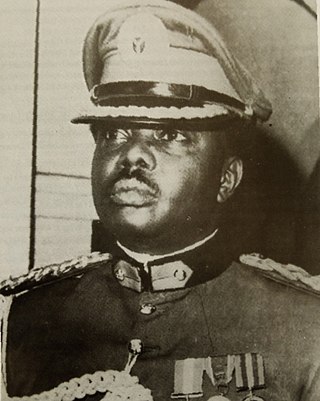
Murtala Ramat Muhammed ; 8 November 1938 – 13 February 1976) was a Nigerian general who led the 1966 Nigerian counter-coup in overthrowing the Johnson Aguiyi-Ironsi military regime and featured prominently during the Nigerian Civil War and thereafter ruled over Nigeria from 29 July 1975 until his assassination on 13 February 1976. This period in Nigerian history, from the Northern counter-coup victory to Murtala's death, is commonly associated with the institutionalization of the military in politics.

The Nigerian Air Force (NAF) is the air branch of the Nigerian Armed Forces. It is the youngest branch of the Nigerian Armed Forces. It is one of the largest in Africa, consisting of over 18,000 personnel as at 2021 and aircraft including 9 Chengdu F-7s, 11Dassault-Dornier Alpha Jets, three JF-17 Thunder Block II and 12 Embraer EMB 314 Super Tucano aircraft, 24 Ameracchi M-346 FAs on order, attack helicopters, armed attack drones, and military transport aircraft.

Fort McPherson was a U.S. Army military base located in Atlanta, Georgia, bordering the northern edge of the city of East Point, Georgia. It was the headquarters for the U.S. Army Installation Management Command, Southeast Region; the U.S. Army Forces Command; the U.S. Army Reserve Command; the U.S. Army Central. Situated on 487 acres (1.97 km2) and located four miles (6 km) southwest of the center of Atlanta, Fort McPherson has history as an army post dating back to 1867.
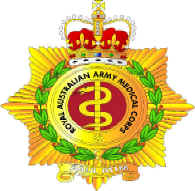
The Royal Australian Army Medical Corps (RAAMC) is the branch of the Australian Army responsible for providing medical care to Army personnel. The AAMC was formed in 1902 through the amalgamation of medical units of the various Australian colonies and was first deployed to South Africa as a small detachment of personnel supporting the Australian Commonwealth Horse during the Second Boer War. The corps has participated in every Australian Army operation since then, including wars and peacekeeping operations. The "Royal" prefix was granted in 1948.
Nigerian Baptist Convention is a Baptist Christian denomination, affiliated with the Baptist World Alliance, in Nigeria. The office headquarters is in Ibadan, Nigeria. Rev. Dr. Israel Adélaní Àkànjí MFA is the president.

The 82nd Division was formed under British control during the Second World War. It took part in the later stages of the Burma Campaign and was disbanded in Burma between May and September 1946.
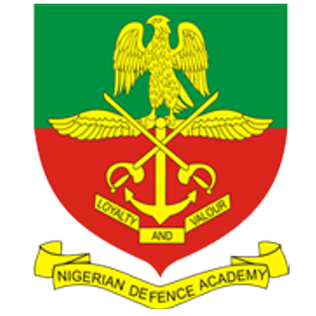
The Nigerian Defence Academy (NDA) is a military university based in Kaduna, Nigeria that trains officer cadets for commissioning into one of the three services of the Nigerian Armed Forces: the Army, the Navy, and the Air Force. The duration of training at the Nigerian Defence Academy is five years.

The Nigerian Army (NA) is the land force of the Nigerian Armed Forces. Tracing its history to British colonial forces in West Africa, it is the largest component of the armed forces. The President of Nigeria is the Commander-in-Chief of the Nigerian Army, and its professional head is the Chief of Army Staff, who is the highest ranking military officer of the Nigerian Army. It is governed by the Nigerian Army Council (NAC). The Nigerian Army is operationally and geographically divided into ten divisions, the basic field formation. The army has been involved in operations throughout the country, most especially during the Nigerian Civil War, and has undertaken major operations abroad. Nigerian Army officers have served as chiefs of defence in other countries, with Brigadier General Maxwell Khobe serving as Sierra Leone chief of staff in 1998–1999, and Nigerian officers acting as Command Officer-in-Charge of the Armed Forces of Liberia from at least 2007.
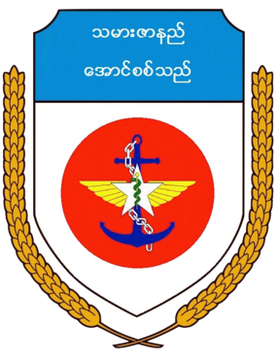
The Defense Services Medical Academy (DSMA), located in Mingaladon, Yangon, is the University of Medicine of the Myanmar Armed Forces. One of the most selective universities in the country, the academy offers M.B., B.S. degree programs. Upon graduation, most DSMA cadets are commissioned with the rank of Lieutenant in the Myanmar Army Medical Corps. The military physicians are to serve the healthcare needs of rural people when they are assigned in the country's remote regions where access to healthcare is poor.

The state of medical knowledge at the time of the Civil War was extremely primitive. Doctors did not understand infection, and did little to prevent it. It was a time before antiseptics, and a time when there was no attempt to maintain sterility during surgery. No antibiotics were available, and minor wounds could easily become infected, and hence fatal. While the typical soldier was at risk of being hit by rifle or artillery fire, he faced an even greater risk of dying from disease.
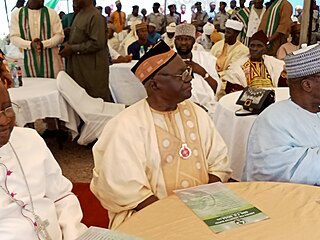
Zamani Lekwot is a retired Nigerian Army major general who served as the military governor of Rivers State, Nigeria from July 1975 until July 1978 during the military administrations of Generals Murtala Muhammed and Olusegun Obasanjo.

Hamza Abdullahi was a Nigerian statesman and military administrator who served as Governor of Kano State from 1984 to 1985; and Minister of the Federal Capital Territory from 1986 to 1989.

The 28th Combat Support Hospital was a Combat Support Hospital of the United States Army. It was first constituted in 1943 and served in China during World War II. During the Gulf War in 1990, it was the first Army hospital unit established and deployed into Iraq with combat forces of the XVIII Airborne Corps. More recently it has been involved in relief operations following natural disasters and has undertaken several recent deployments to Iraq. The unit fell under the command of the 44th Medical Brigade and was based at Fort Bragg, North Carolina.

The Kenya Army is the land arm of the Kenya Defence Forces.

Suraj Alao Abdurrahman, was a Nigerian Army general who served as the Command Officer in Charge of the Armed Forces of Liberia, with former Liberian president Ellen Johnson Sirleaf as the Commander-in-Chief. According to then President Johnson Sirleaf, General Abdurrahman "was an exceedingly exceptional gentleman officer whose contributions lifted the Armed Forces of Liberia to professional greatness and emplace our military amongst UN peacekeepers”.

Ibrahim Bata Malgwi Haruna is a retired officer of the Nigerian Army. He was a Federal Commissioner for Information and Culture between 1975 and 1977. He was also the Chairman, Executive Council, of Arewa Consultative Forum from 2009 to 2012. He holds the traditional title of Walin Garkida. He has notably been accused for ordering the Asaba Massacre, an atrocity committed during the Nigerian Civil War, but this is actually untrue; the massacre was ordered by Ibrahim Taiwo, as Haruna was not in command at that area. See Elizabeth Bird and Fraser Ottanell's "The Asaba Massacre: Trauma, memory, and the Nigerian civil war", pp. 77.
Ahmad Abubakar Gumi is an Islamic cleric, scholar and former military officer with the rank of captain in the Nigerian Army. He is the current Mufti and mufassir at the Kaduna central mosque Sultan Bello.
Major General Abimbola Olatilewa Amusu is a Nigerian soldier who commanded the Nigerian Army Medical Corps from 2015 to 2018. She was the second female officer in the history of the Nigerian Army Medical Corps to have commanded the corps. She was appointed after the retirement of Major General Obashina Ayodele.

Anthony Mayowa Atolagbe is a retired Nigerian army general, military expert and advisor who served as Field Commander of the Task Force Operation for counter terror operations in North Central Nigeria.
















